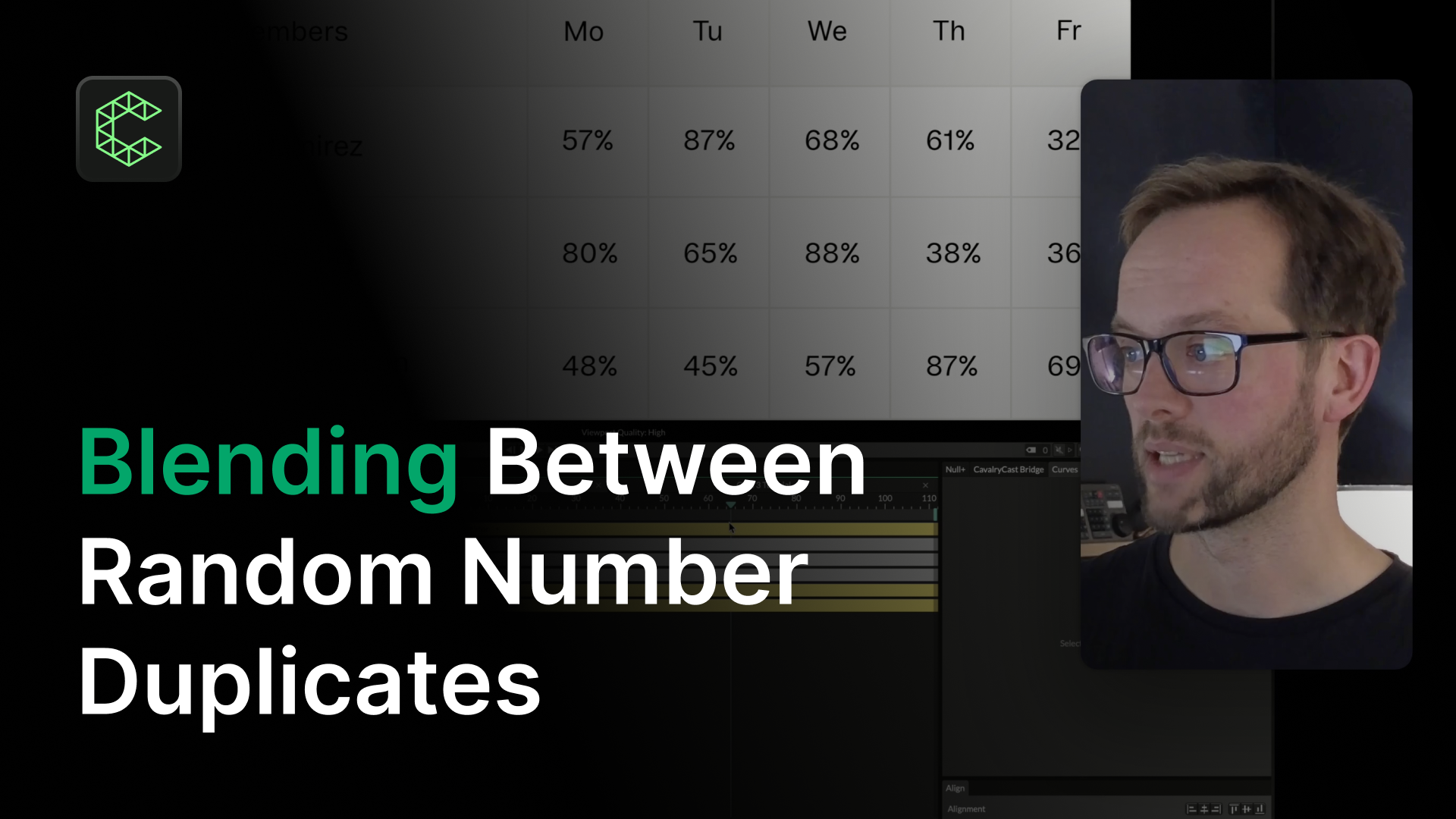This was the first course I ever created back in 2018. It cemented my love for long-form educational content and, actually, as you see from the slightly basic trailer above, an interest in motion design. This was the first time I ever played around with motion, and it was actually in a tool that was just meant for screencasts, Camtasia. For my motion friends, this will look hilarious, but I have a very fond memory of working on this. It was the start of a whole new realm of work for me.
Anyway, below is the standard spiel about the course that is on Udemy, and also some previews of the first part of the course. It's interesting looking back in time at myself. It's quite a long time ago now. I've had kids, moved to a different city, but I still love the way that this course is structured. I'm very proud of it. People still take it every week, and it still brings me a good income on Udemy.
Check out the course here on Udemy →
---
The Ultimate Guide to Piano, Harmony, Chords & Music Theory for Producers, Film & Game Composers and Songwriters.
This course has four core elements:
- An extensive introduction to piano technique, theory & arrangement
- Fundamental & advanced harmony & music theory at the piano taught & learned in a practical way you can start using immediately. (as opposed to learning how to read, which isn’t as efficient as a learning strategy.)
- A look at powerful compositional techniques and strategies to help you generate material and problem solve when you get stuck
- Conventions and structures of piano chords, progressions and songwriting, so that you can analyse and grow your knowledge of building songs & tracks.
Many composers, producers and songwriters feel restricted by their lack of ability and knowledge of music theory at the piano. Without doubt, one of THE greatest things you can do to supercharge your composing and songwriting abilities is to gain greater technique and experience in modern day harmony at the piano.
The aim of this course is to give you a powerful and extensive compositional vocabulary, from the ground up - right up to advanced music theory, chords & harmony. And it does it all through a practical, hands on experience of theory at the piano, and it’s all accessible without having to read any music.
This course was designed for three types of musician, the beginner and intermediate
- Producer
- Composer (Film & Games)
- Songwriter
For the beginner, this course takes you from literally ground zero into the building blocks of what makes music work, right up to advanced harmony - without skipping a beat. You’ll learn to write a wealth of different material at the piano and start your composing journey off right with a powerful skillset at the piano.
For the intermediate composers, producers and songwriters who are already serious about their craft but feel restricted by never really getting their head around piano & theory - this course covers almost everything you need to know. It’s built from thousands of hours (literally) of experience in private teaching with composers, producers & songwriters with a highly experienced teacher. For those of you who feel your writing ability is held back by your piano, arranging, compositional strategy & harmonic knowledge this course is completely designed for you.
And even if you’re basically semi-pro, but think your piano technique, voicings and harmonic knowledge are missing a trick, I still know the course will be of value to you. We cover extended Jazz Harmony, thematic writing, non-diatonic chord relationships and more.
At the end of this course not only are you going to feel more strong and fluent as a writer, you’re going to be able to solve critical problems on the fly whilst composing; things like:
- ‘Where do I start? How do I generate material?’
- ‘I have a chord progression, how do I make it more interesting?’
- ‘How can I make my chords sound more sophisticated?’
- ‘I have a chord progression, but I don’t know where to take it next’
- ‘What’s the musical science behind why that sounds like it does
- ‘I have chords, how do I add a bass line?’
- ‘I have a melody, how do I add chords?’
- ‘I have chords, how do I add a melody?’
- ‘I have a bass line, how do I add chords?’
- ‘My melodies sound a little dull, how can I make them more interesting?’
- ‘If my chords are going to stay the same, how can I make them sound different or more inspiring for the next section?’
At the end of this course, you’re going to be able to:
- Express yourself and your ideas fluently
- Know how to compose well & use extended music theory without having to involve yourself in reading music but by understanding simple patterns at the piano.
- Unleash your writing with tools to unblock the writing process and generate material with ease
- Be able to write anything from classical music, to jazz music to mainstream music - because the fundamental building blocks of harmony are largely the same.
- Build interesting chord progressions and choose from hundreds of other options when something doesn’t sound quite right
- Alleviate a lot of writer's block!
- Have specific principles, techniques and formulas for making music work at your fingertips
- Teach others the fundamentals of music theory and composition and keep teaching yourself so that you can learn and master piano more and more.
This course contains many piano tutorials on piano scales, piano chords, exercises and is the perfect way to learn piano online.
More of the elements we cover:
- How to write a song
- How to compose music
- How to improvise
- All the most common piano chords and how to create them instantly
- How to play jazz chords on the piano
- The most common chord progressions and how to manipulate them into your songs
- How to write music compositions for film or games
- How to write themes for characters in films or musicals
- The fundamentals of musical composition
- How to compose piano music
- How to play keyboard scales
- What chords sound good together
- How to modulate between different keys
- How to create different feelings with literally hundreds of different scales (I’m not talking about different root notes here with just minor, major, blues etc - this is a whole other level of scales you’ve probably never used.)
- How to transpose between different keys and transpose the songs you love into the right key for you or someone else to sing to
- How to accompany singers
- Many different accompanimental patterns to suit different circumstances
- How to analyze music
- How to read chord symbols
- How to find the key of a song
- Why the favourite sounds of your fav artists are so
- How to write effective melodies that are really interesting
- How to structure your compositions well with harmony
- How to voice and arrange and play your chords in interesting ways
- How to write bass lines
- How to write effective voice leading with 3 or 4 parts for orchestral string writing
- How to create pretty much any chord from scratch, including: major, minor, diminished, augmented, suspension, major 7th, minor 7th, dominant 7th, diminished 7th, 9th chords, 11th chords & 13th chords.
- How to reharmonize and make your progressions rhythmically interesting
- The power of tension and resolution in music writing
This course has A TON of theory in it. But the goal is not to turn you into a theory monster who composes theoretical music. The goal of this course is to give you fluency and OPTIONS so you can choose who you want to be and how you want to write, and express yourself in your own unique way.
Above all, you should know that I obsess about teaching effectively - there’s no rambling, tangents, wasted space or filler. It’s not 30 hours (yet) because I’ve made every video super condensed and to the point, whilst trying not to rush. I also care deeply about and teach you how to think & learn music effectively. I hope to see you on the inside
Curriculum (with previews)
- Trailer - https://youtu.be/o6ypFiA7Dqw
- Overview of the Course - https://youtu.be/Q8Z9xZjE3eo
- General Preliminaries - https://youtu.be/w0WRJoF4VPc
- The Grid - https://youtu.be/UnMnvty89AE
- The Chromatic Scale - https://youtu.be/fK4Tz_DLRpY
- Creating a Major Key - https://youtu.be/DalFYeaLyjs
- Creating Chords Inside of a Major Key - https://youtu.be/K0cXaIc_CLQ
- Naming Notes on the Piano - https://youtu.be/YQFM4esUw1s
- Ambient Track Assignment - https://youtu.be/hd0bi7hs5L4
- Ambient Track Example - https://youtu.be/QbXtsOXypTE
- Establishing Gravity with Keys - https://youtu.be/BFfDksWf270
- The Circle of Fifths | Major Kety Gravity - https://youtu.be/pm1XwSXHIfY
- Creating a Minor Scale - https://youtu.be/pm1XwSXHIfY
- Learning All Keys - https://youtu.be/PgvIgPug4kQ
- Assignment: Transposing Chords & Melodies
- Get Composing!
- Technique & Fluence at the Piano
- Hand Positions & Fingerings
- Wandering Hands Backing Tracks
- ASSIGNMENT: Wandering Hands Track
- EXAMPLE: Wandering Hands Track
- Introduction to Chords in a Key (Diatonic Harmony)
- Analysing 1000+ Tunes
- Common Chord Progressions & Conventions
- 30% Different - Changing Standard Chord Progressions
- Chord 5 in a Minor Key
- Harmony Cheat Sheet: Stage 1
- Tension & Resolution
- Chord Tones
- Non Chord Tones
- The Feelings of Different Intervals
- Layering & Overlapping
- Non-diatonic Tones
- The Pentatonic Scale
- Patterns: The Way to Think About Your Music
- ASSIGNMENT: Melody Writing
- EXAMPLE: Melody Writing
- Roman Numerals in Analysis
- Harmonic Structure
- Repeating Harmony
- Repeating Harmony Example Track
- Small Changes in Harmony
- Varying Your Bass Lines
- Modulation: New Centres of Gravity
- Composing 3 Different Sections
- 3 Different Sections Example
- Introduction to Voicing
- Arpeggiation
- Examples of Arpeggiation In Context
- Closed & Open Position Chords
- Inversions
- Doubling
- Dropping
- Voice Leading
- Grace Notes
- Accompanying Singers Assignment
- Accompanying Singers Example
- Orchestral String Writing Assignment
- Orchestral String Writing Example
- Another Example of Voice Leading
- Harmony Cheat Sheet: Level 2
- Bass Lines Introduction
- Voice Leading & Passing Notes
- Bass Line Riffs
- Introduction to Chords from Scratch
- In Depth: Chords from Scratch
- How to Create Triads from Scratch
- Suspension chords
- Working out the key of a song
- Modulation & Secondary Dominants
- Pushing Out the Key Assignment
- Pushing Out the Key Example Track
- Introduction to Upper Structures
- How to Create 7th Chords
- Diminished & Augmented 7th Chords
- How to Create 9th Chords
- Adding 11th & 13ths to Your Chords
- Upper Structure Composing Assignments
- Upper Structure Composing Example
- Upper Structure Re-harmonizing Example
- How to Read Chords and Chord Symbols
- Harmony Cheat Sheet: Level 3
- Where Do I Start?: Generating Material with Rules
- Patterns, Patterns, Patterns…
- Introduction to Harmonic Rhythm
- Passing Chords & Reharmonisation
- Reharmonisation Assignment
- Phrasing & Space
- Phrasing & Melodic Rhythm Assignment
- Standard Accompaniment Patterns (with commentary)
- Standard Accompaniment Patterns (no commentary)
- Musical Layers & Alignment
- Adding Very Subtle Misalignment in Tracks
- The Chord Progression Manual
- What Scales Go with What Chords?
- The Blues Scale
- Harmonic & Melodic Minor Scales
- The Scale Omnibus
- Paired Pentatonics
- Modes
- Introduction to Chord Relationships
- Chord Relationship & Arpeggiation Assignment
- Chord Relationship & Arpeggiation Example Breakdown
- Writing Themes
- Conclusion & Resources













